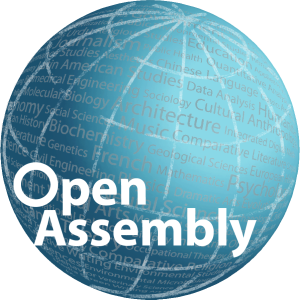To better engage her students, this adjunct details how she used our platform to track their progress (and find out whether they were really paying attention in class).
This summer I had the opportunity to take the Open Assembly platform for a demo in my image-based humanities course at a large urban public institution.
As a teacher for 14 years in some way or another, I have developed my own style of teaching that I’ve honed over the semesters. I’ve found that as my confidence in my voice grew, I abandoned the podium to which I originally found myself tethered. Because of this style of instruction, I did not teach directly from the OA platform, but I did spend many hours crafting the course within OA using information that reinforced what we covered in class.
While some students are able to take notes and still follow along, for others this proves difficult. This summer I had two foreign students who were somewhat new to the U.S. Their writing was fine, but when speaking with me, it became clear that they did not understand everything I was saying. This is problematic in an accelerated course where content is covered quite rapidly. Both of these students greatly benefited from reviewing the content on our OA course page, where they could review the learning materials at a slower pace and re-watch the video content until they understood.
This brings up the way I enjoyed using Open Assembly the most during these courses: taking advantage of the ANALYTICS function to track students’ access to resources that I uploaded for the course. Through blank stares and low test scores, I had a hunch that certain students were not following along. My suspicions were confirmed when I saw that they had not accessed either the readings or the modules on the OA platform. While it seems a little “Big Brother,” it is a useful tool that allowed me to follow up with students who were not accessing the course materials.
Another significant benefit of Open Assembly was that for the first time, every one of my students had access to the assigned textbook. Prior to this semester, I had not used an open textbook before. I found an excellent open educational resource (OER) alternative to the (somewhat costly) textbook I had been using before, and assigned it to my latest crop of students. For once I had a level playing field in my classroom, with every student being able to afford this (free & open) textbook.
One of the ways that I plan to use the Open Assembly platform in the future is for constructing debate and assignments that can take place outside of class time. Case in point: there is immense debate over a group of sculptures known as the Elgin marbles or Parthenon marbles. These relief sculptures decorated the interior and exterior of the Parthenon temple that sits on the Acropolis in Athens, Greece. Acquired by Lord Elgin during his time as the British ambassador to the Ottoman Empire in the early 19th century, they are now on display in the British Museum. This debate involves repatriation of artifacts and the question of who rightfully “owns” the Parthenon marbles. The Greek government contends that they were taken out of the country illegally, and there are numerous documents and video clips giving alternate sides of the argument.
In a group-based discussion exercise, students often need prompting to start the debating, but once started, many join the conversation. Unfortunately there is not enough time in the semester to devote a whole class to this exercise, so this is how I plan to use the Open Assembly platform: through videos integrated within my curriculum, students will be able to form their opinions about the status of these sculptures, then make a statement through the COMMENTS interface, forcing them to take a position. This is followed up with a formal writing assignment where the student has to make a statement and then defend that decision in a two- to three-page written response. I’m really excited about the debate possibilities that Open Assembly can bring to my classroom.


Leave a comment